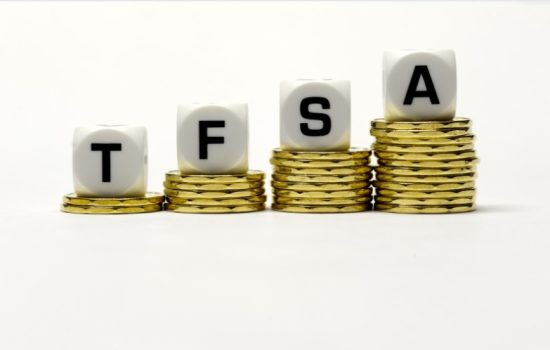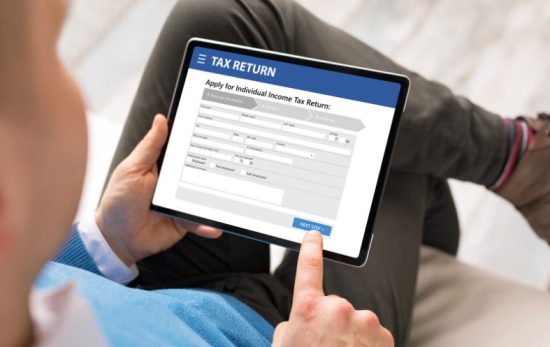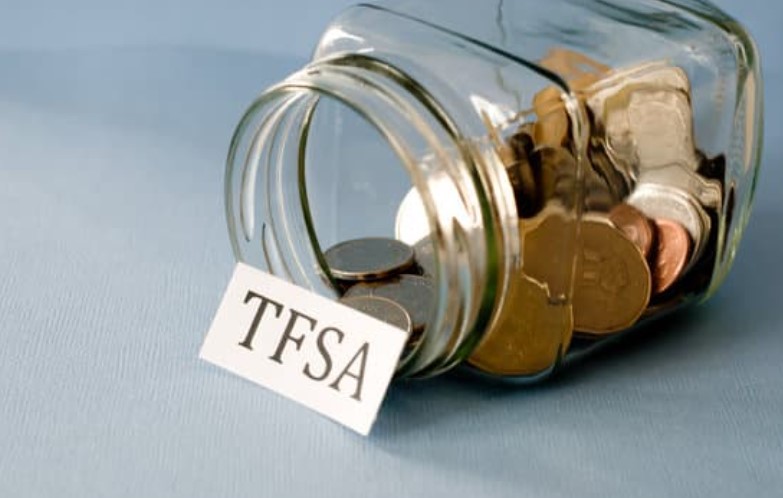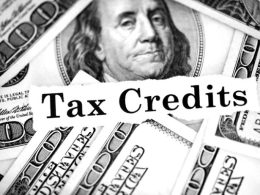Are you looking to make the most of your hard-earned money? Want to save for your future, tax-free? Look no further than a Tax-Free Savings Account (TFSA). But wait, what exactly is the TFSA contribution limit? How much can you put in this magical account without facing penalties or fees? Don’t worry, we’ve got you covered! In this blog post, we’ll break down everything you need to know about the TFSA contribution limit. From calculating it accurately to maximizing your returns and avoiding overcontributions, we’ll guide you through it all. So buckle up and get ready to unleash the full potential of your TFSA!
What is the TFSA Contribution Limit?

In simple terms, it refers to the maximum amount of money you can contribute to your Tax-Free Savings Account within a given year. The government sets this limit as a way to regulate how much tax-free growth each individual can enjoy.
Now, you might be wondering how this magical number is determined. Well, it’s not a fixed amount that remains the same every year. The TFSA contribution limit tends to change annually based on various factors like inflation and economic conditions. It’s important to stay up-to-date with these changes so you don’t accidentally overcontribute and face penalties.
As of the current year, the TFSA (Tax-Free Savings Account) contribution limit in Canada is $6,500. This annual limit is set by the Canadian government and is subject to potential changes in subsequent years.
To get started, take note of any unused contribution room from past years. Let’s say you’ve never contributed before or have withdrawn all your funds previously – in that case, your total unused room would equal the cumulative annual limits for each eligible year since TFSAs were introduced.
How to Calculate TFSA Contribute Limit?
Calculating your TFSA contribution limit is a crucial step in making the most of this tax-efficient savings account. Thankfully, determining your allowable contributions is relatively straightforward.
To calculate your TFSA contribution limit, you need to consider two main factors: the annual contribution limit set by the government and any unused contribution room from previous years.
Each year, the Canadian government sets a maximum amount that individuals can contribute to their TFSAs. For 2023, the annual contribution limit is $6,500. However, it’s important to note that these limits are subject to change from year to year.
In addition to the yearly limit, any unused contribution room accumulates over time. If you have never contributed or haven’t maximized your contributions in previous years, you can carry forward those unused amounts into future years.
Remember – understanding how much you can contribute each year allows you to take full advantage of tax-free investment growth within your TFSA while avoiding unnecessary fees or complications down the line!
How to Maximize TFSA Return?

When it comes to maximizing your TFSA return, there are a few strategies you can employ. First and foremost, make sure you’re taking advantage of the full TFSA contribution limit each year. By contributing the maximum amount allowed, you’ll be able to maximize the tax-free growth potential.
Another way to boost your TFSA return is by investing in assets that have the potential for higher returns. While it’s important to consider risk tolerance and diversify your portfolio, investing in stocks or mutual funds with strong historical performance can help increase your overall returns.
Regularly reviewing and adjusting your investments is also crucial for maximizing returns. Keep an eye on market trends and make informed decisions about when to buy or sell investments within your TFSA.
Furthermore, consider utilizing a Tax-Free Savings Account as part of a long-term savings strategy rather than simply treating it as a short-term savings account. By taking advantage of compounding interest over time, you can significantly enhance your overall return.
Remember that everyone’s financial situation is unique, so it’s essential to consult with a financial advisor who can provide personalized guidance tailored to your specific goals and circumstances. With careful planning and strategic decision-making, you can work towards maximizing your TFSA return while enjoying the benefits of tax-free growth.
What Happens if you overcontribute to your TFSA?
It’s important to be aware of the contribution limits for your Tax-Free Savings Account (TFSA) to avoid any penalties or complications. If you contribute more than the allowable amount, there are consequences that you should know about.
When it comes to TFSAs, every individual has an annual contribution limit set by the Canadian government. If you exceed this limit, a penalty tax will be applied to the excess contributions. The penalty is 1% per month on the highest excess amount until it is withdrawn from your account.
To prevent unintentional overcontributions, keep track of how much you’ve already contributed in a given year. You can easily find out your current TFSA contribution room by checking with Canada Revenue Agency (CRA), either online or through their phone service.
Exceeding your TFSA contribution limit leads to financial consequences in terms of penalty taxes imposed on the excess contributions. Therefore, always stay informed about your available contribution room and monitor it closely throughout the year to avoid any inadvertent mistakes or overpayments.
How Much Can You Put in a TFSA?
When it comes to contributing to your Tax-Free Savings Account (TFSA), many people wonder how much they can put in. The good news is that the TFSA contribution limit has been steadily increasing over the years, allowing Canadians to save and invest more tax-free.
As of 2023, the annual TFSA contribution limit is $6,500. This means that you can contribute up to $6,500 per year without incurring any taxes on your investment gains. However, it’s important to note that if you don’t max out your contribution room for a particular year, you cannot carry forward the unused amount to future years.
If you haven’t contributed to a TFSA before or have withdrawn funds from your account, it’s essential to know how much contribution room you have available. To find out your exact limit, you can check with the Canada Revenue Agency (CRA) or access your MyAccount through their website.
One great advantage of TFSAs is that there is no lifetime limit on how much you can hold in these accounts. As long as you stay within your annual contribution limits and follow the rules regarding eligible investments and withdrawals, there are virtually no restrictions on how much money you can accumulate over time.
It’s worth mentioning that while there are no penalties for exceeding your annual contribution limit within a given year—unlike an RRSP tax return—overcontributing does come with consequences. Any excess contributions will be subject to a penalty tax of 1% per month until they are removed from the account.
How Much Can You Put in a TFSA if Never Contributed?

If you’ve never contributed to your TFSA before, you might be wondering how much you can put into it. The good news is that the contribution room accumulates every year, even if you haven’t made any contributions. So, if you were eligible for a TFSA since its inception in 2009 and have never contributed, your total contribution room would be quite significant.
You would currently have a total TFSA contribution capacity of $88,000 as of 2023 if you were 18 years of age or older in 2009. This is so that you have had time to go up the TFSA ladder and accumulate that worthwhile contribution space.
This means that if you haven’t made any contributions since 2009 and are eligible for each year’s full amount of contribution room, your total allowable contribution could be as high as $88,000.
It’s important to note that this calculation assumes you have been a Canadian resident over the age of 18 since 2009 and have not previously used any portion of your available contribution room. If there have been previous withdrawals from your TFSA account or other factors affecting eligibility or unused space in certain years, it may impact the overall maximum amount you can contribute.
To determine exactly how much contribution room is available to you based on your circumstances and history with TFSAs, it is advisable to contact the Canada Revenue Agency (CRA) or consult with a financial advisor who specializes in tax planning.
Conclusion
As Canadians, we pride ourselves on being generous with our money. But when it comes to making tax-effective contributions to our TFSA accounts, many of us hesitate. This article will help you understand the TFSA contribution limit and how you can maximize your savings by contributing the maximum amount each year. By following these tips, you’ll be in good shape to take advantage of the generous contribution limits and make the most out of your TFSA account!
FAQs – TFSA Contribution Limit
1. Can I put more than $6000 in TFSA?
For 2023, the TFSA contribution cap is $6,500. The maximum TFSA contribution limit for a person who turned 18 before 2009 and has never contributed is $88,000.
2. Can I take all my money out of my TFSA without penalty?
In general, you are free to withdraw funds from your TFSA whenever you like. While there are no fees associated with TFSA withdrawals, you will be taxed if your contribution maximum is exceeded. The amount of money you can annually contribute to a TFSA is capped by the government.
3. Do you have to claim TFSA on income tax return?
Most TFSA owners do not owe any tax on their TFSA investments, and there is no need to file a TFSA tax return. In contrast, Form RC243, Tax-Free Savings Account (TFSA) Return, must be submitted by June 30 of the following year if TFSA taxes are relevant for the entire year. By that date, you must also pay whatever taxes you owe.
4. How do I avoid tax on my savings account in Canada?
Consider opening a Tax-Free Savings Account (TFSA) if long-term savings are your main objective. The interest you earn and the money you withdraw from a TFSA are tax-free.











